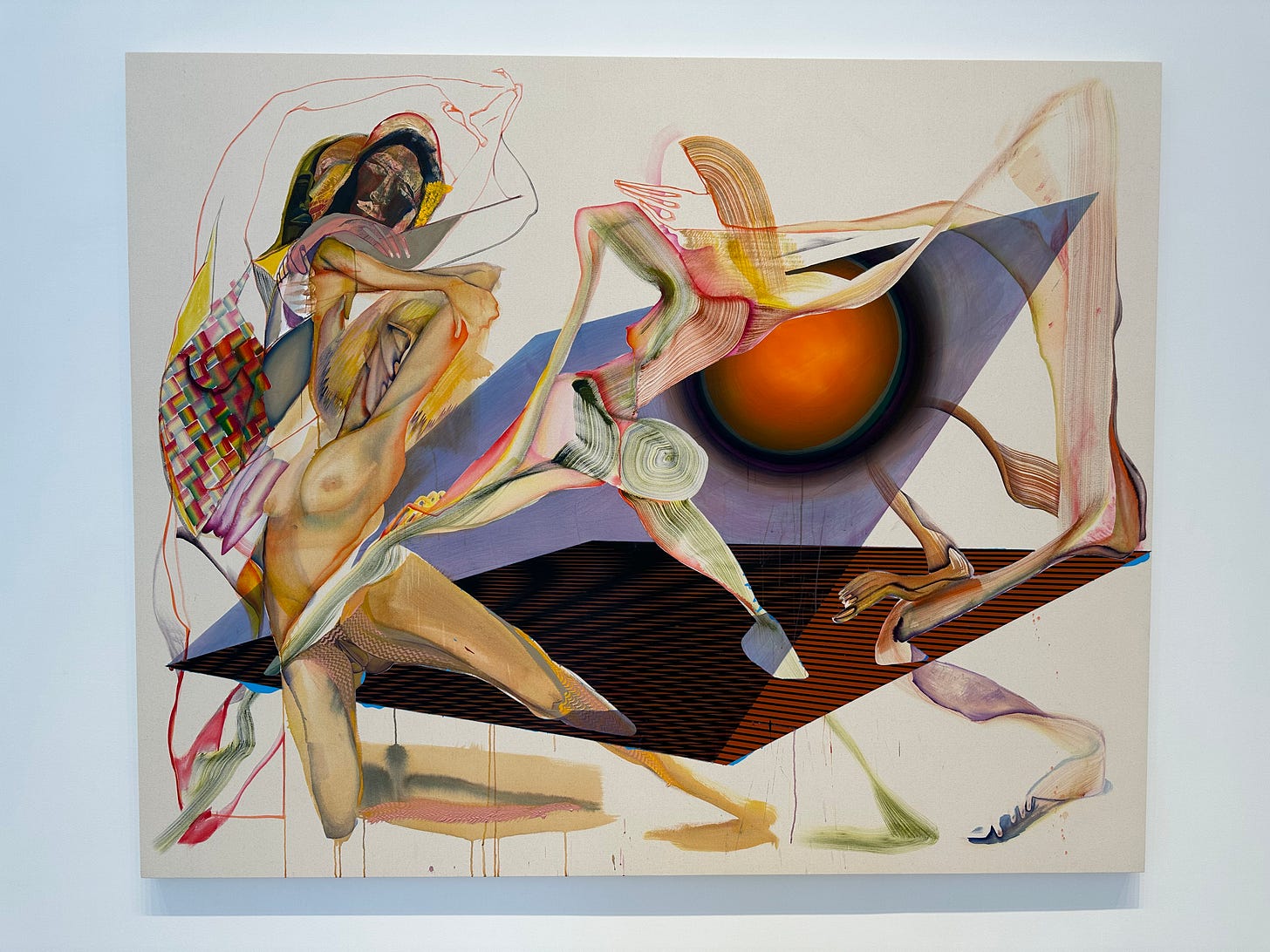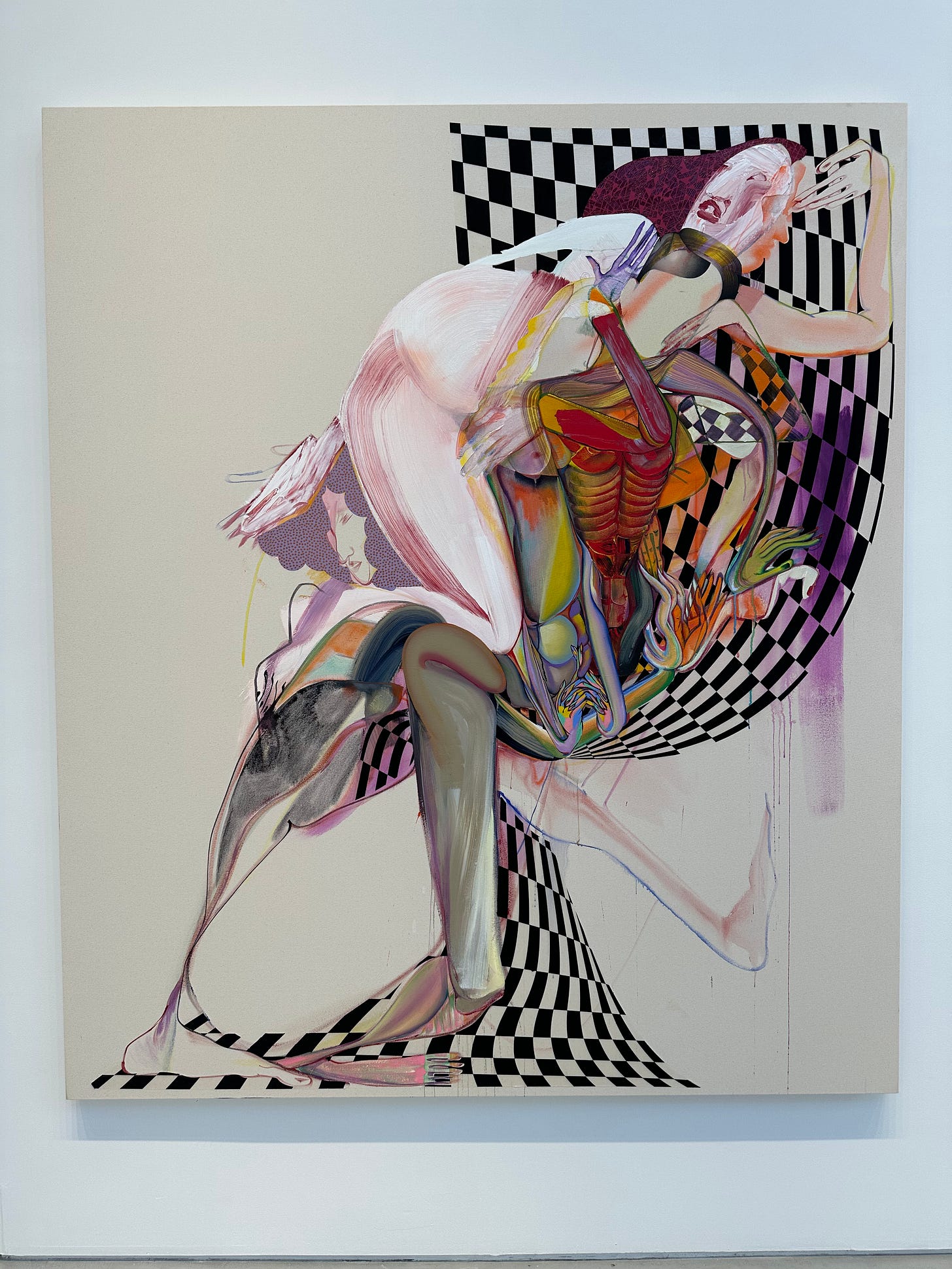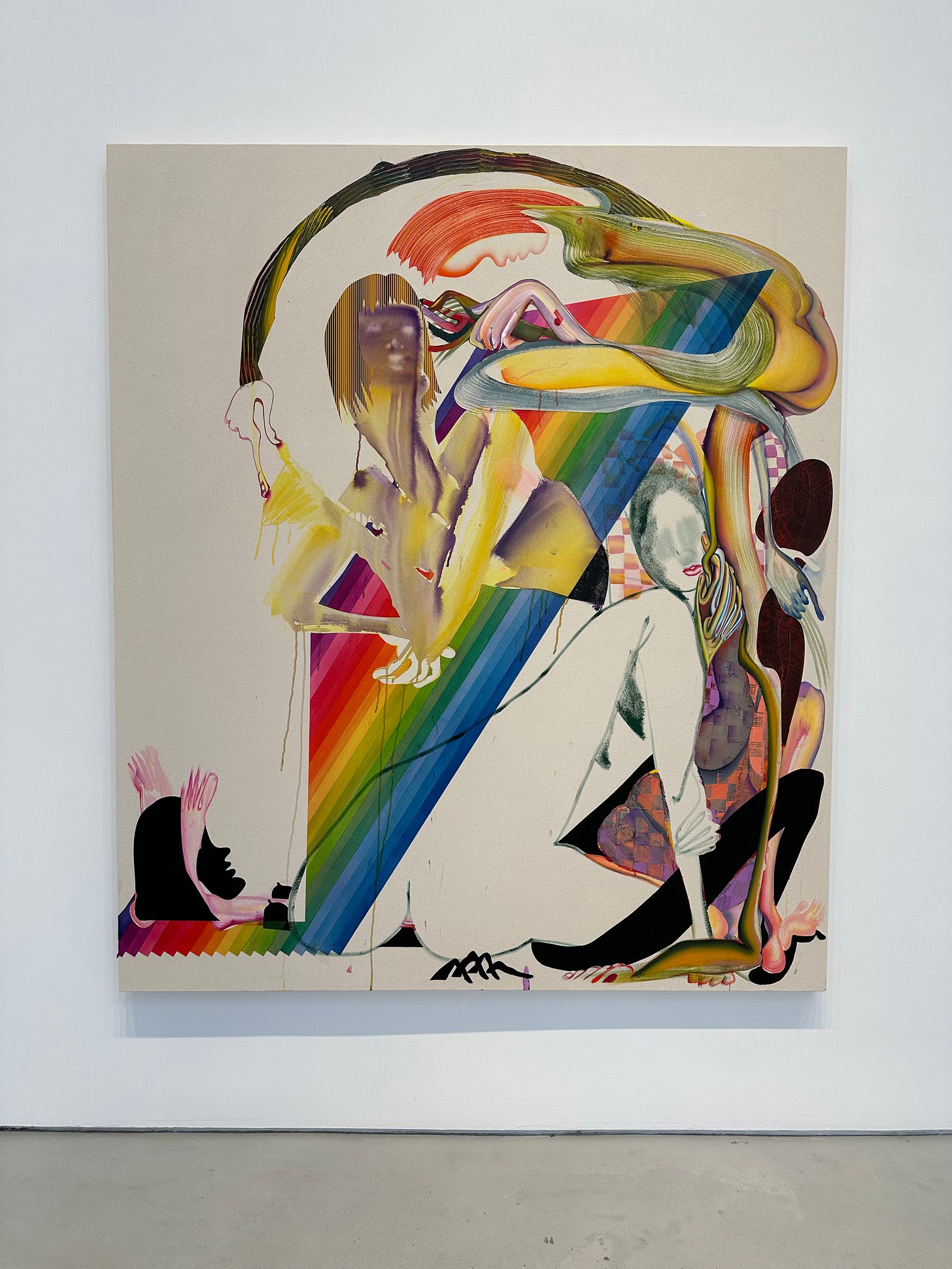Christina Quarles: In 24 Days tha Sun'll Set at 7pm
Francis Bacon is having a moment. I’m seeing his compressed illusionism and his splayed figuration in a few places recently. The paintings in Christina Quarles’s show at Hauser & Wirth are not tortured in the same way as Bacon’s, thankfully. (Not that there’s anything wrong with that.) What I had seen online of her work did not prepare me for how engaging I would find these paintings in person.
The below images do not do these works justice; you need to stand before them. This show was my first time seeing Quarles’s work irl, and the hype is real. The show energized the other visitors too, in contrast to what I saw on the other floors at Hauser & Wirth. (The other concurrent shows were Jenny Holzer’s and Zoe Leonard’s.) Small groups of young students were in discussion in front of Quarles’s paintings, pointing at different parts. These paintings have an inductive quality of pulling you in to a passage, drawing you to another passage, before you step back again. Quarles’s gestures are light, sinuous, considered, and highly legible. Even when she goes heavy in rare moments, the effect is still fluid and intentional. Variations in weight of the painting strokes, and the care with which edges meet, can only be appreciated when viewing them in-person. The push-pull of your attention, as mentioned earlier, also requires your body to be in interaction with the works.
The legibility of Quarles’s lines and gestures is the most remarkable and mysterious asset of these paintings in my view. I think this legibility is the reason that the visitors (including me) were drawn into engagement with the works. Quarles uses an assortment of ‘lines’ and ‘brushes’ — the best analogy in my mind are the palettes of tools in Photoshop — but incredibly no eraser, so the viewer is led to read the gestures as flows of decisions and intuitions. It is easy to get caught up in a particular passage, drawn into another intriguing passage, yet remain grounded to the larger figuration. The legibility of the process encourages a neuronal dance in the viewer, between the muscle memory of the painting hand and the cognitive gestalt of the figures in composition. This is pleasure. Looking, I felt joy, and the world was all right once again.








